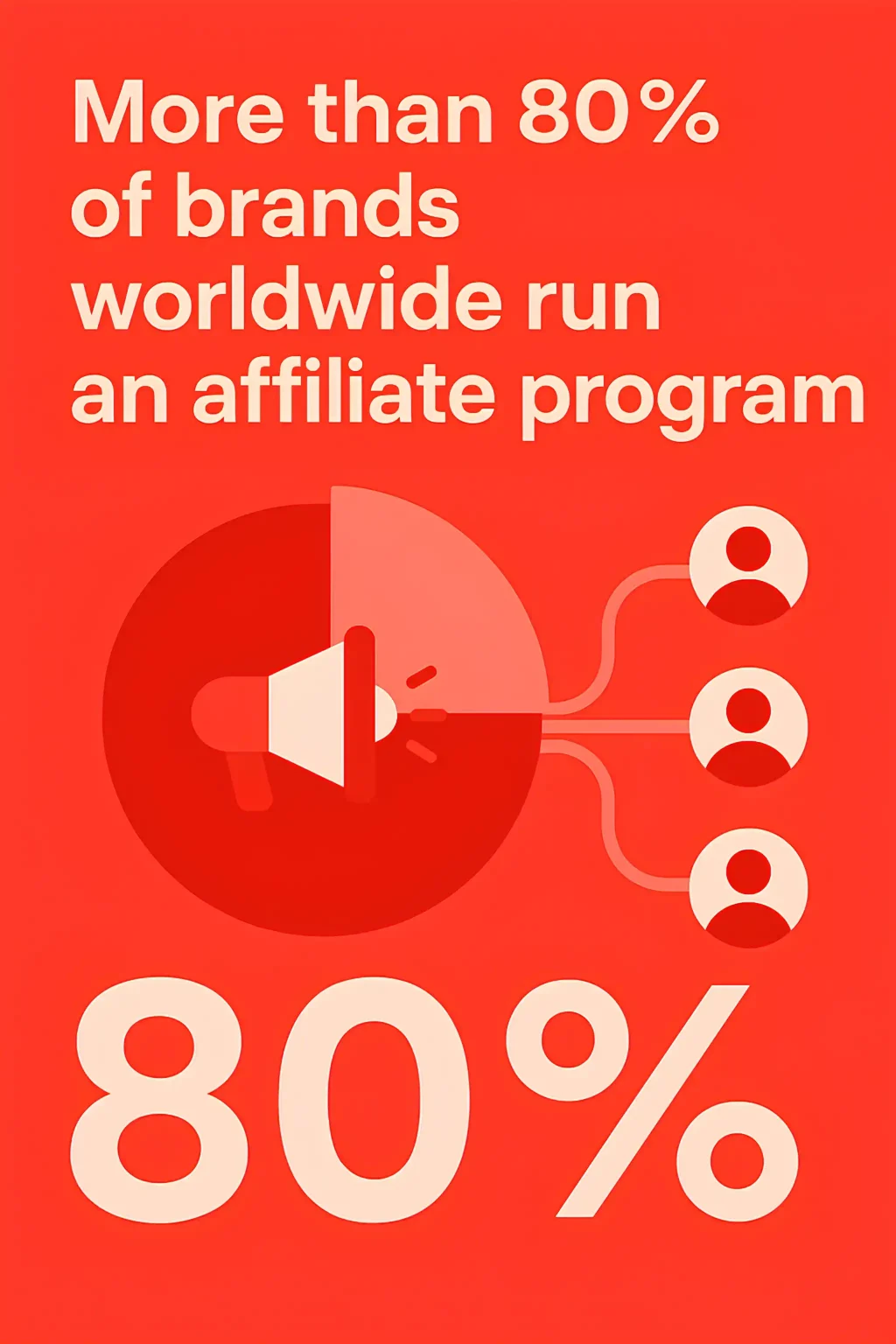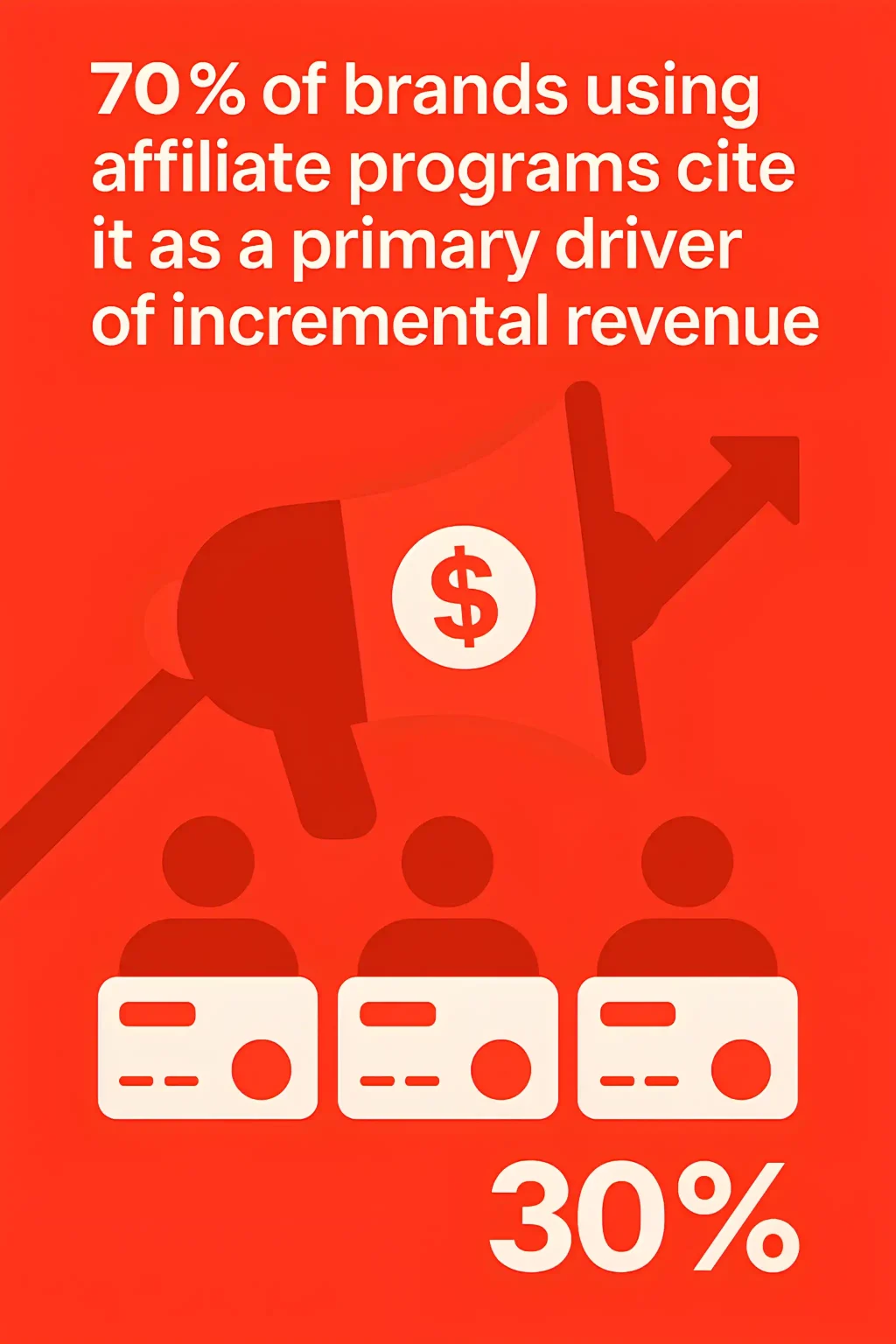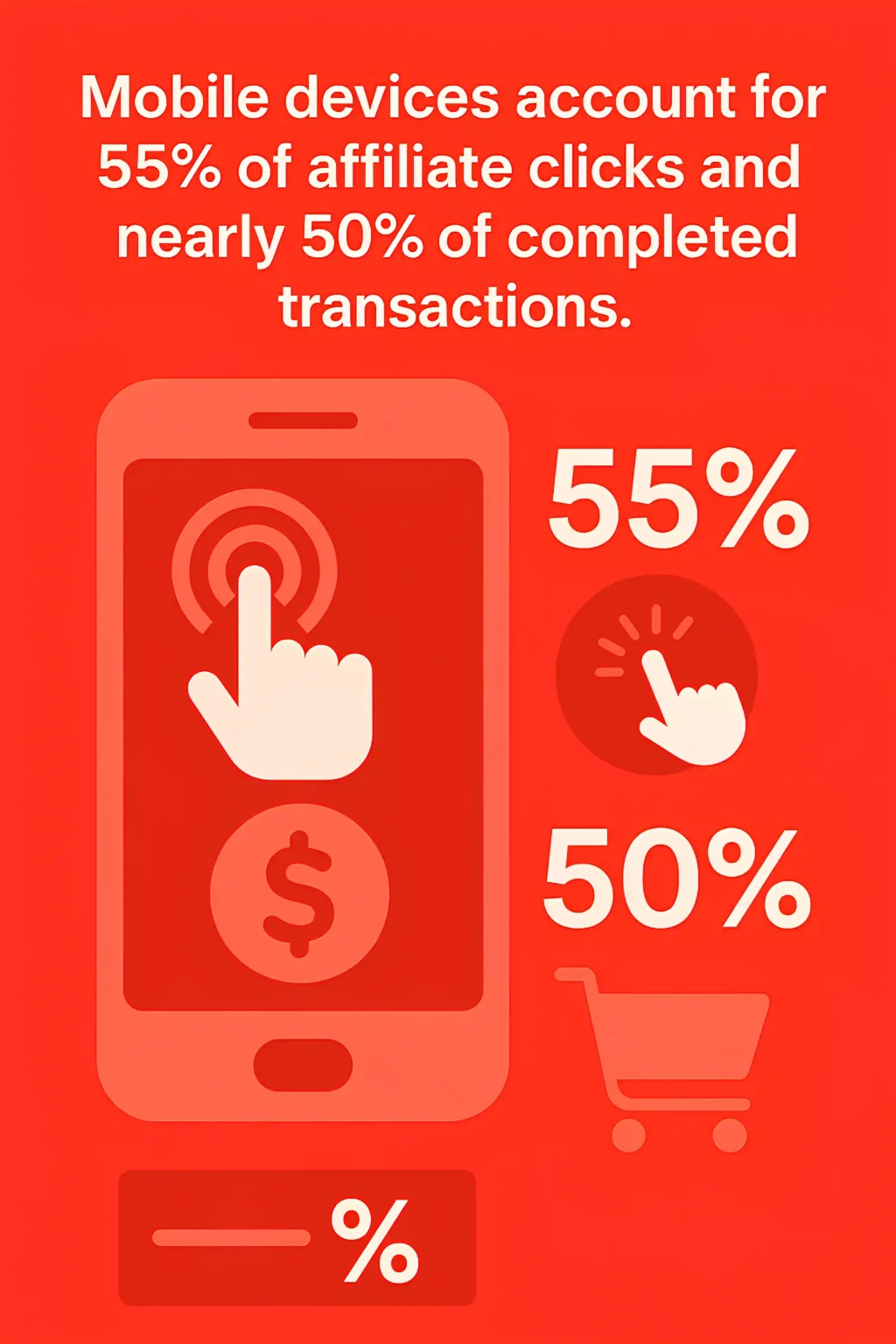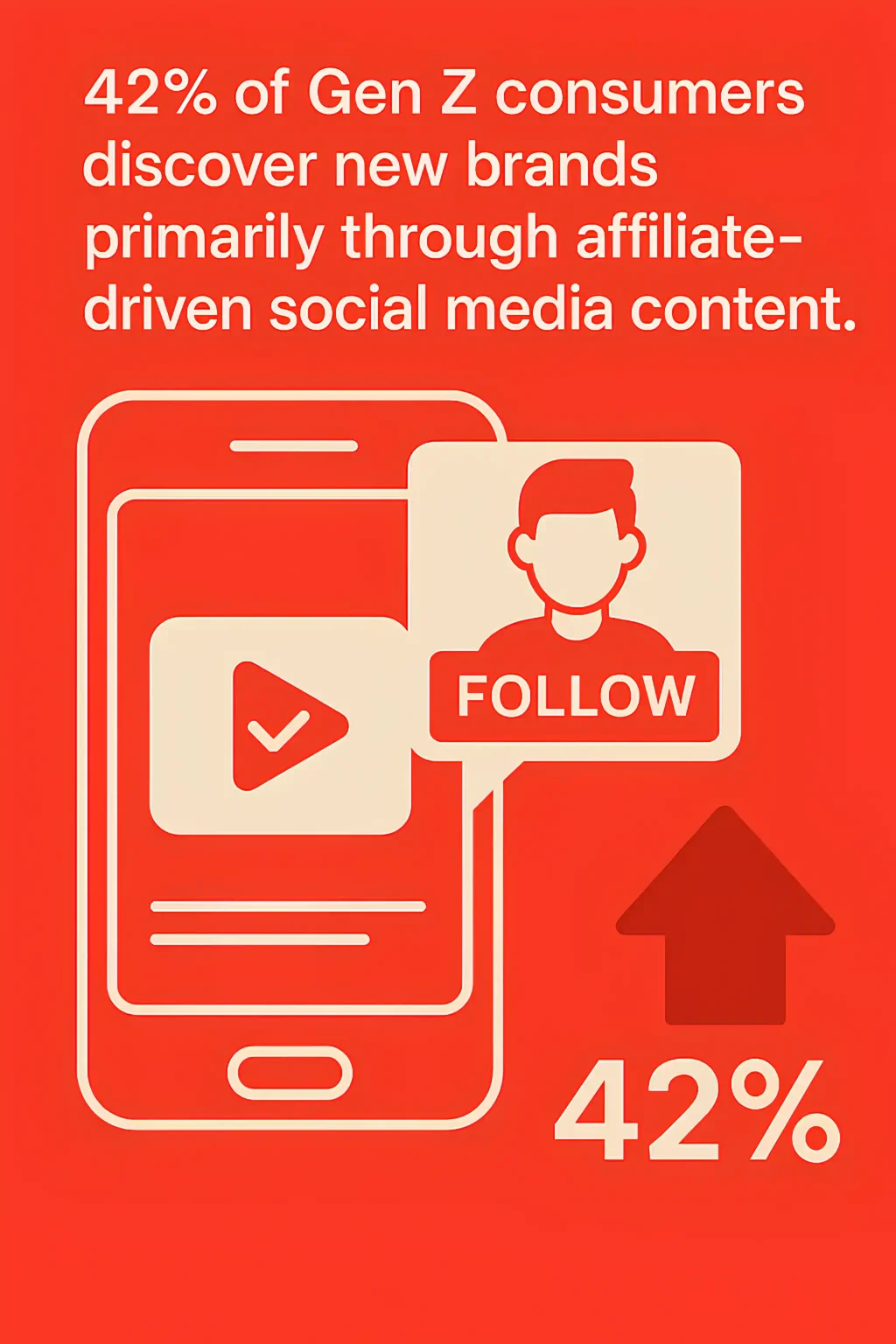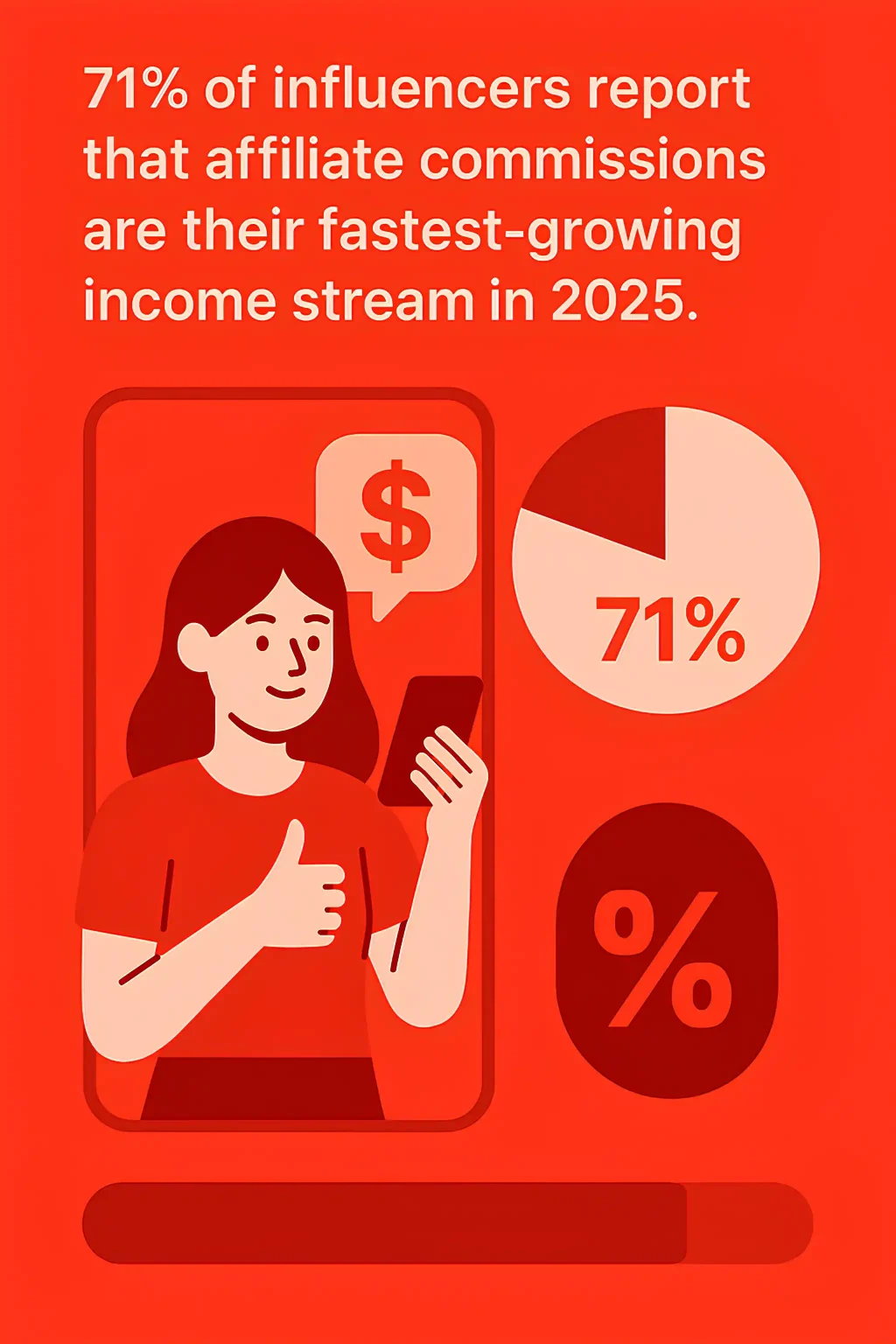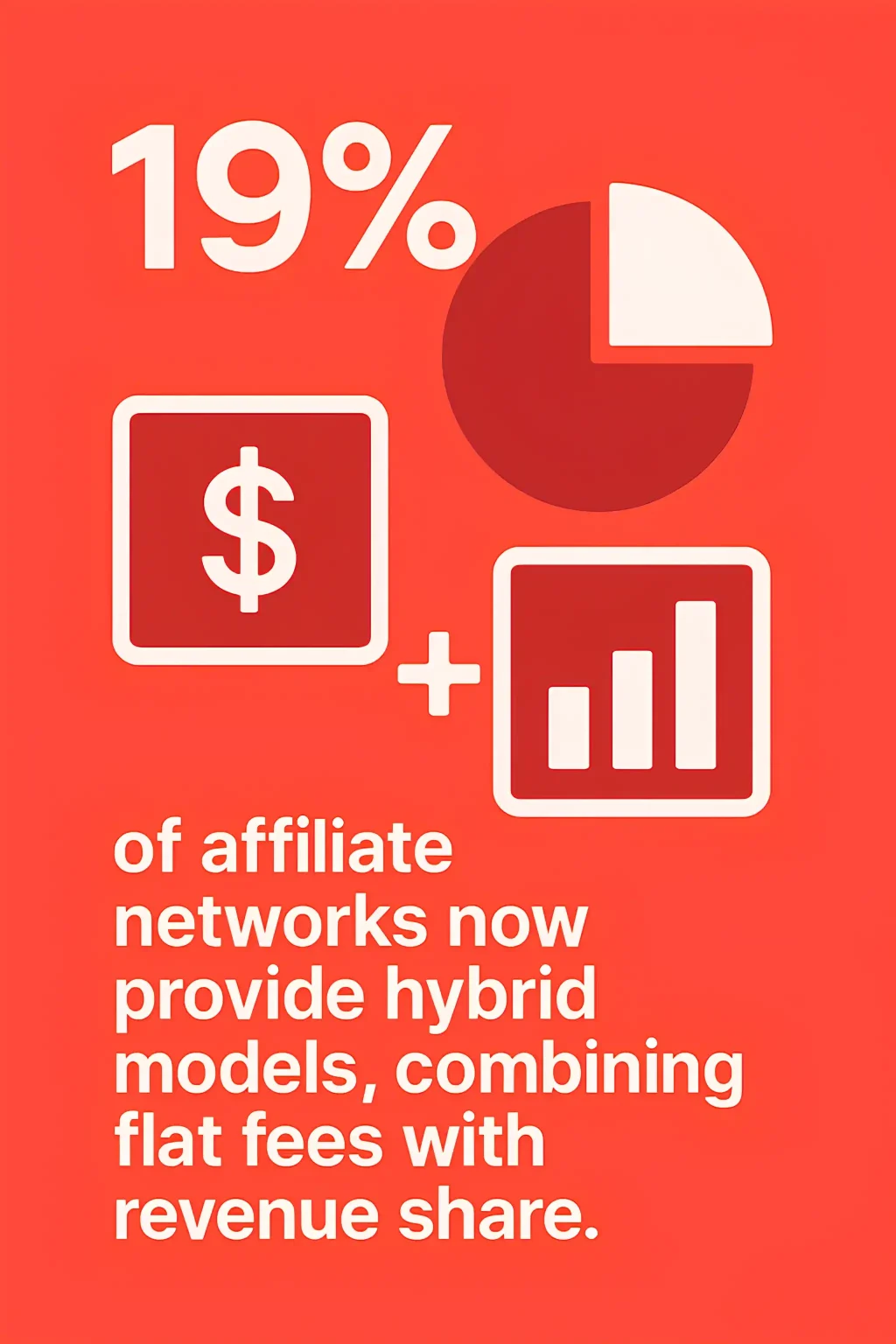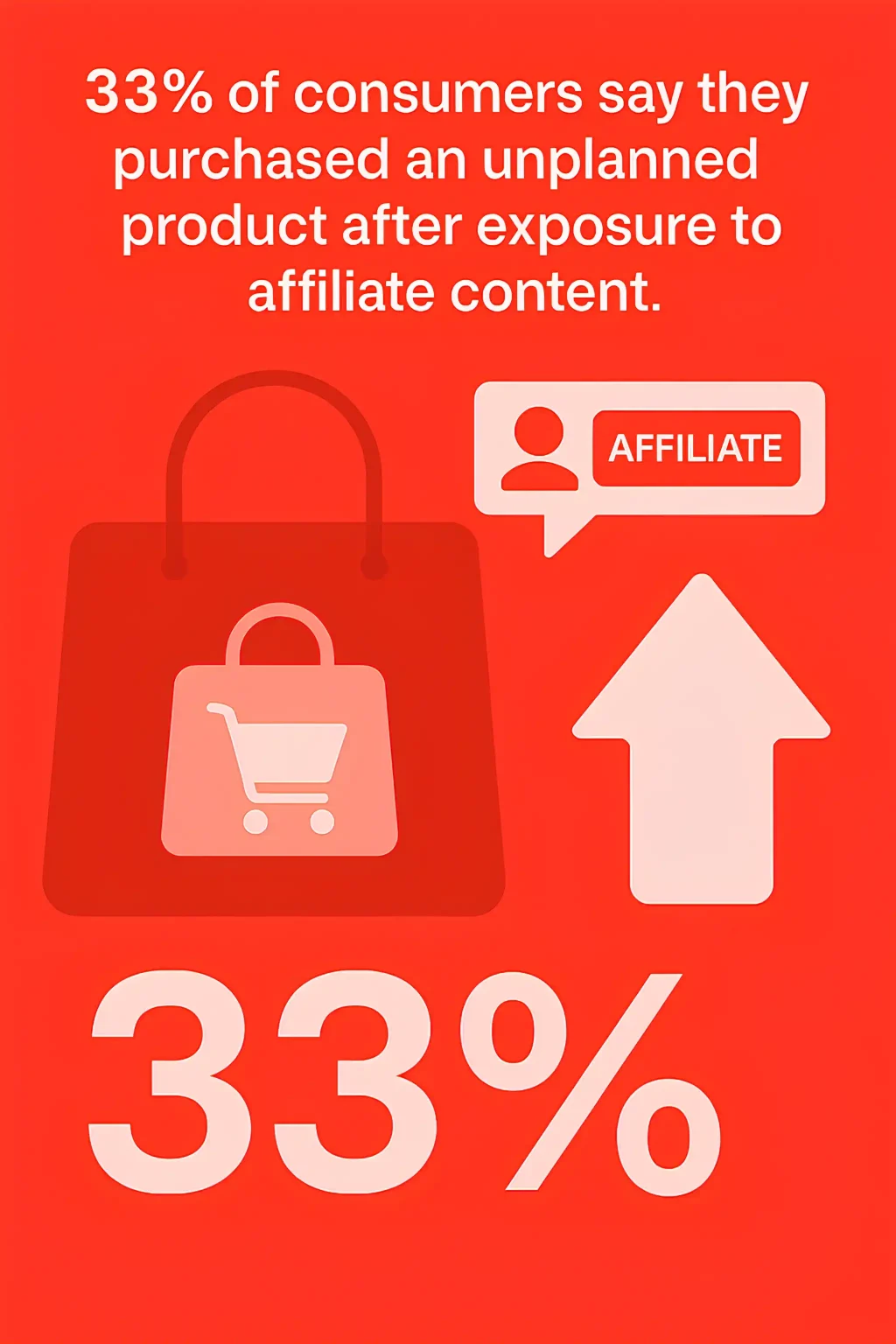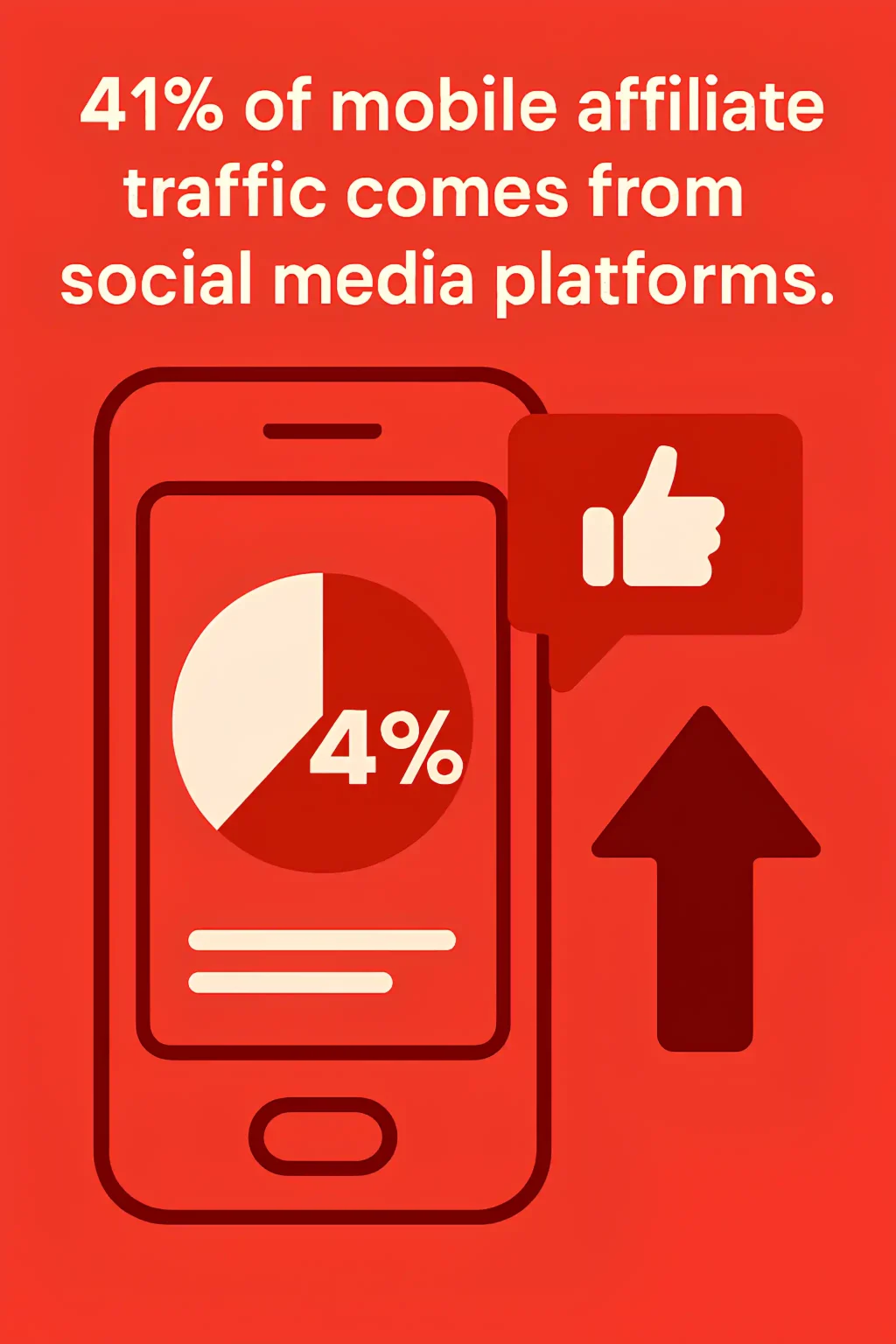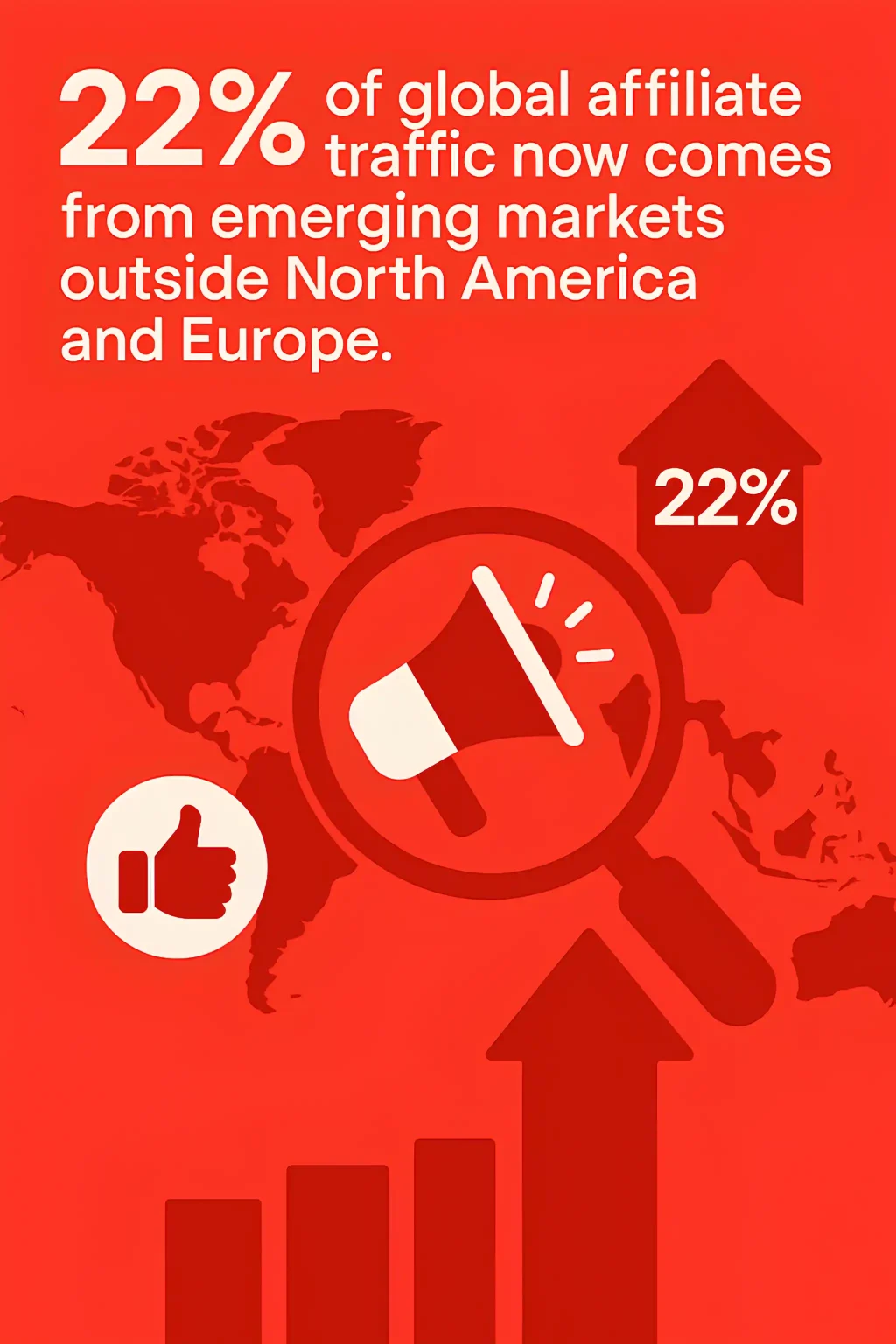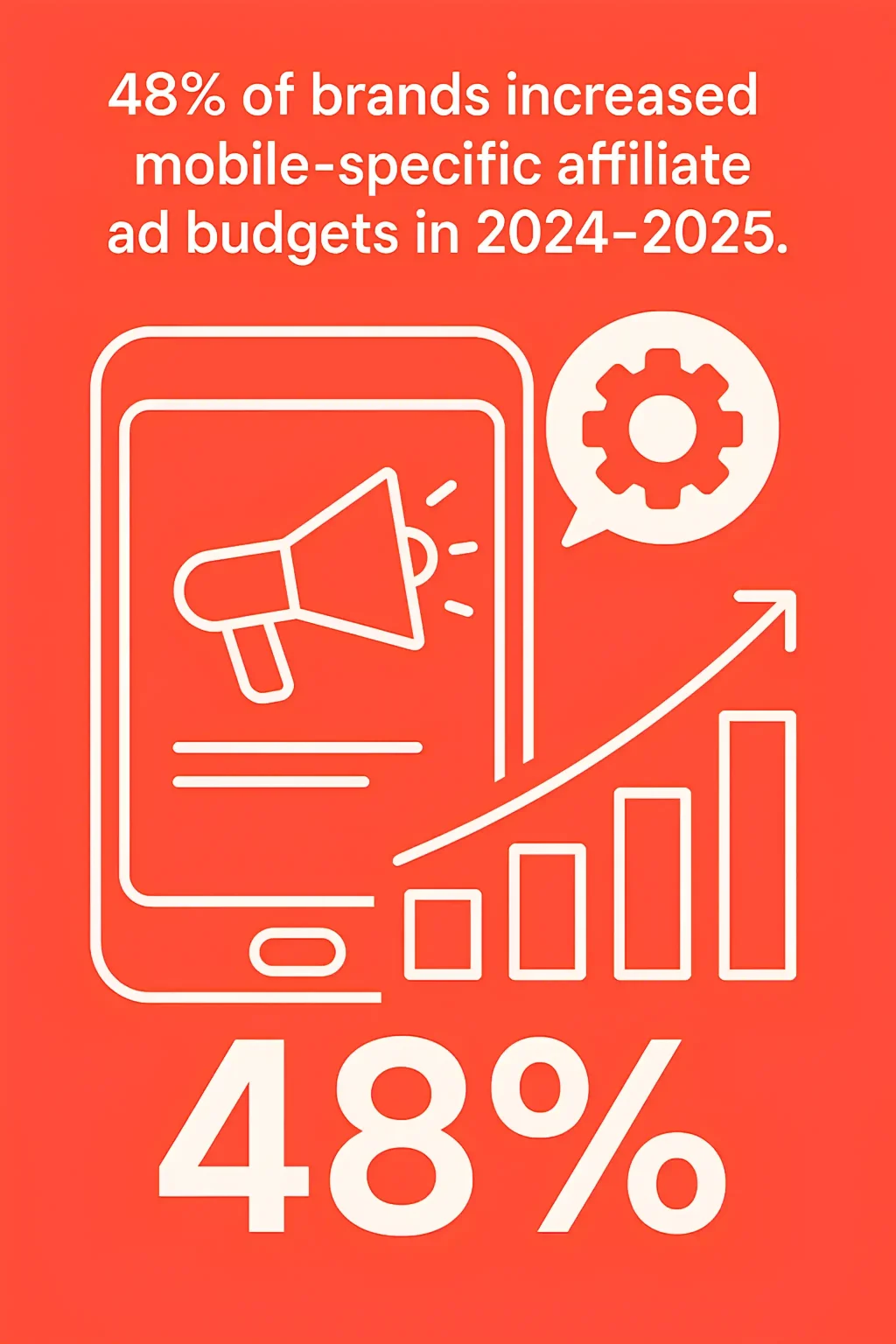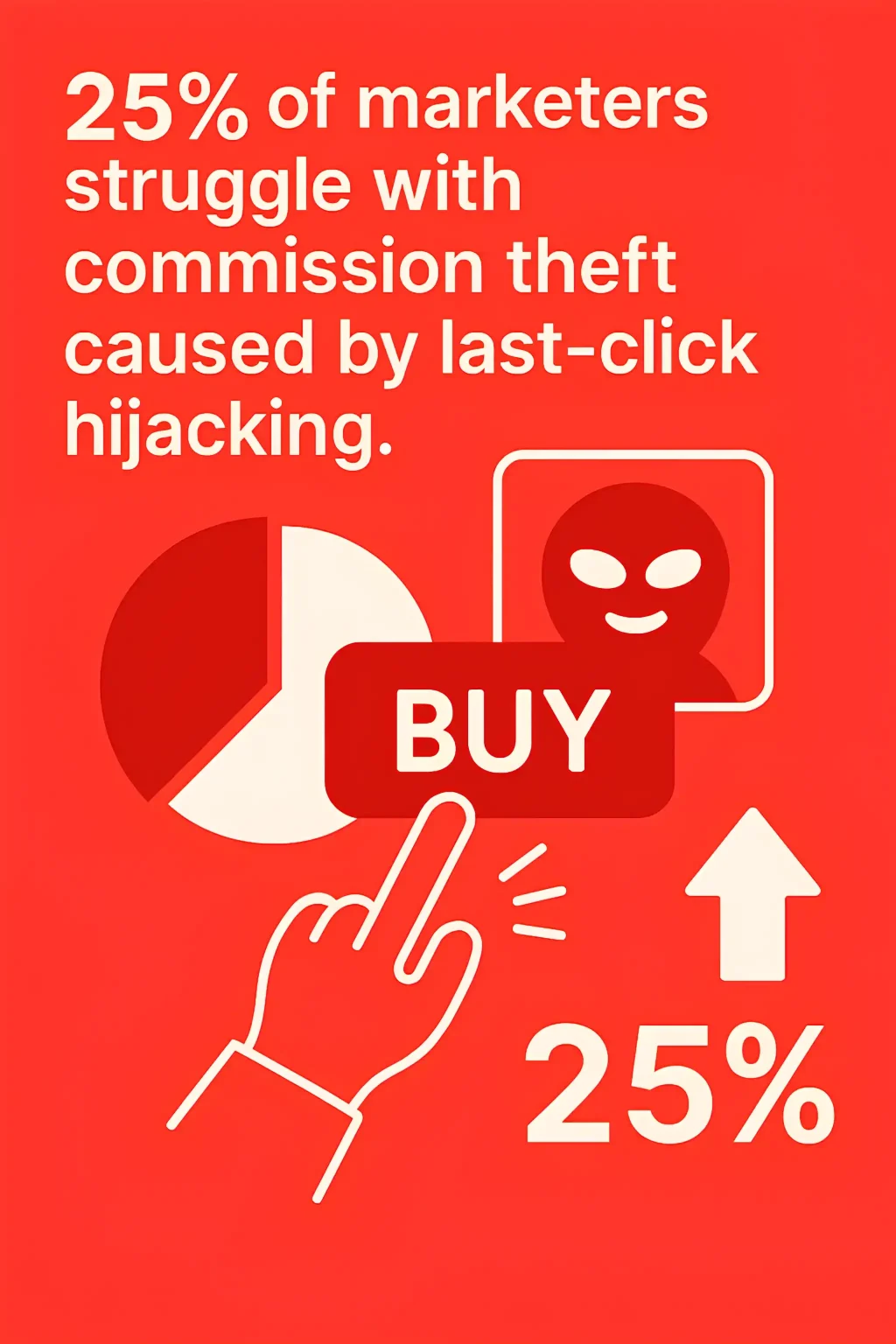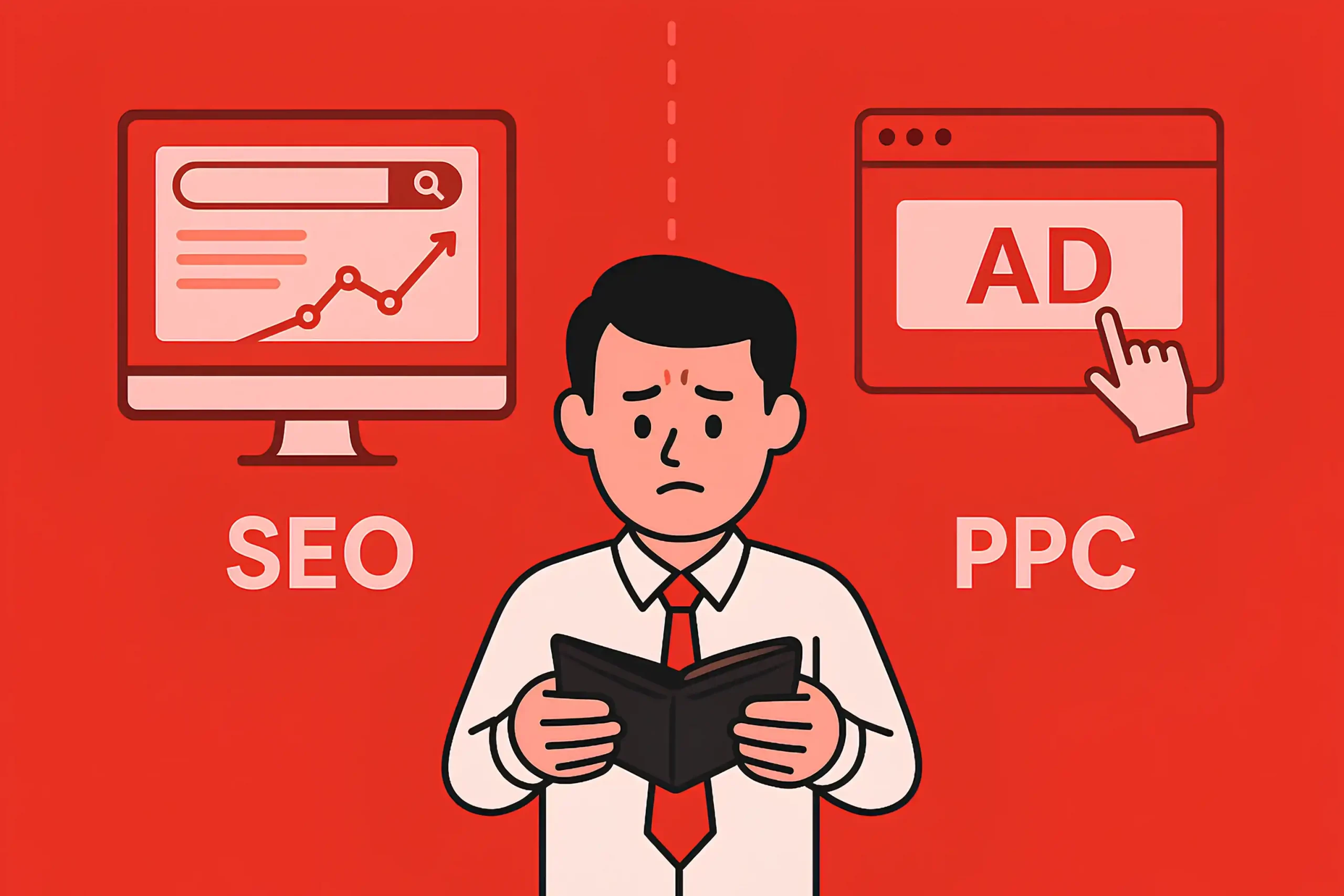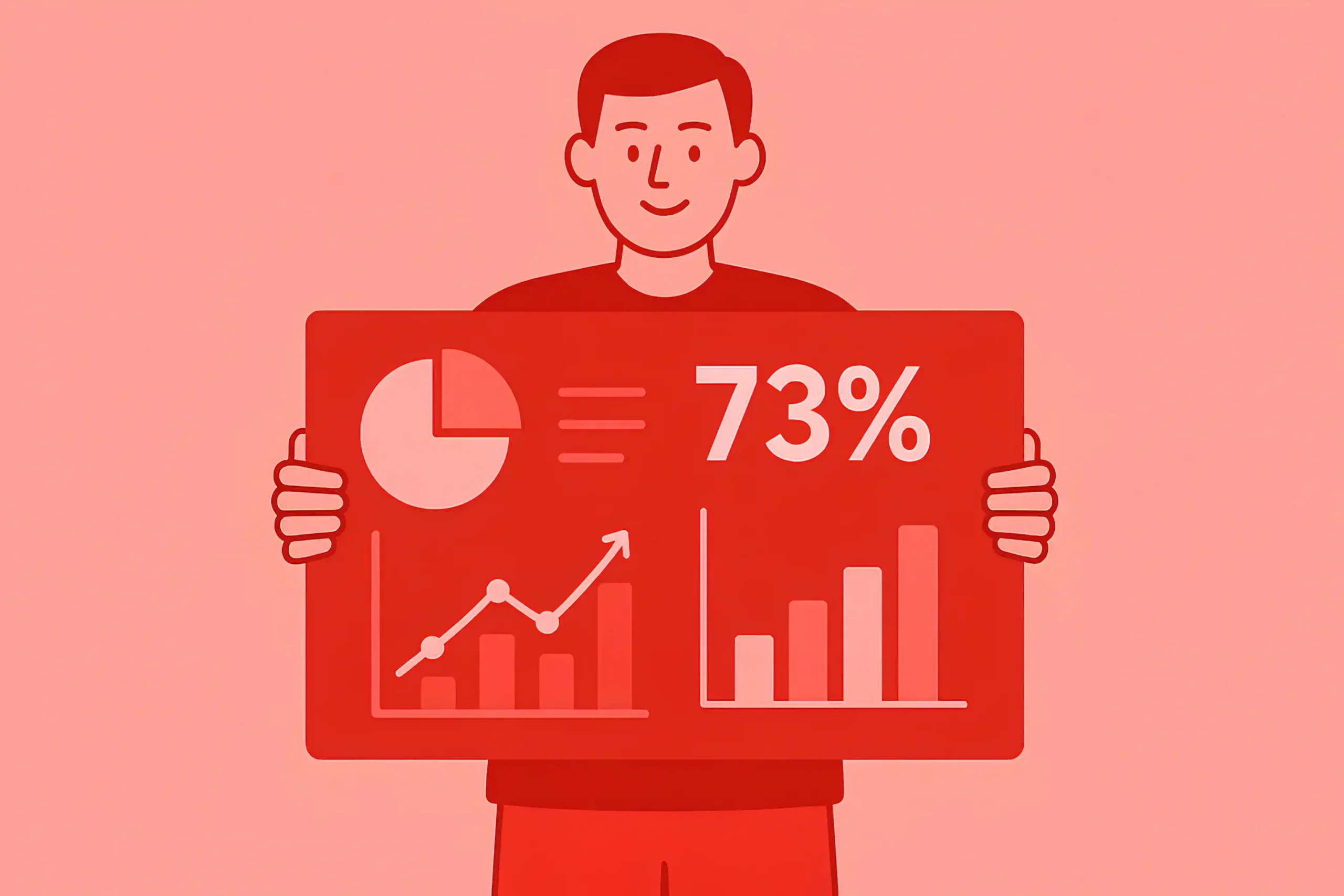Affiliate marketing is no longer a side channel. It has become a multi-billion-dollar growth engine that reshapes how brands acquire customers and how creators monetize influence. In 2025, the industry is projected to exceed $17 billion worldwide, powered by performance-driven models that reward measurable results over traditional spend.
With rapid shifts in consumer behavior, partner networks, and commission structures, relying on assumptions can cost marketers both reach and revenue. That is why data is critical. In our collection of 200+ affiliate marketing statistics, we deliver clarity where strategy often defaults to guesswork.
Use these numbers to uncover overlooked opportunities, sharpen competitive positioning, and strengthen campaigns with insights supported by the latest performance data rather than outdated trends.
Global Affiliate Marketing Industry Growth
The global affiliate marketing industry is projected to surpass $17 billion in 2025, up from $13 billion in 2022.
In the United States, affiliate marketing spending is expected to reach $13 billion in 2025, doubling from $6.8 billion in 2019.
Affiliate marketing now accounts for 16 % of global e-commerce sales.
More than 80 % of brands worldwide run an affiliate program.
The channel has grown at an average of 10 % year-over-year since 2015.
Europe represents over 30 % of global affiliate spend, with the UK leading the market.
Asia-Pacific is the fastest-growing region, projected to expand at a CAGR of 12 % through 2027.
Affiliate partnerships generate up to 30 % of total online revenue for many e-commerce brands.
Over 15,000 advertisers globally are actively investing in affiliate marketing programs.
The top five affiliate networks drive more than 70 % of industry revenue.
Affiliate marketing contributes an estimated $70 billion in annual sales across North America and Europe.
Over 40 % of marketers plan to increase affiliate budgets in 2025.
Global click volume has risen by more than 50 % since 2020.
Cross-border affiliate sales account for 25 % of transactions.
Average ROI reaches 12:1, making affiliate marketing one of the strongest digital channels.
You May Also Be Interested in 80+ Web Design Statistics
Affiliate Marketing Revenue and ROI
Affiliate marketing revenue worldwide is projected to exceed $17 billion in 2025, reflecting steady double-digit growth over the past decade.
In the United States, affiliate-driven sales contribute over $70 billion annually, with publishers and partners generating a significant share of e-commerce revenue.
Affiliate marketing delivers an average ROI of 12:1, one of the highest across digital channels.
Nearly 65 % of affiliate marketers report that their programs generate at least 20 percent of overall company revenue.
Top-performing publishers in retail and finance achieve conversion rates of 3 to 5 %, far higher than traditional display advertising.
Commission payouts to affiliates surpassed $10 billion globally in 2024 and continue to climb.
70 % of brands using affiliate programs cite it as a primary driver of incremental revenue.
In Europe, affiliate revenue reached €19 billion in 2024, with Germany and the UK leading.
Affiliate revenue from mobile devices now accounts for more than 50 % of total affiliate-driven transactions.
High-performing sectors such as fashion, tech, and financial services report affiliate contribution margins above 25 %.
Over 45 % of CMOs consider affiliate marketing among the top three channels for measurable ROI.
Performance-based partnerships have increased by 35 % since 2020, directly tied to revenue-focused models.
Affiliate links generate 16 % of all online orders, making them a cornerstone of digital sales strategies.
You Can Also Dive Into Our 200+ Social Media Marketing Statistics
Affiliate Channels and Traffic Sources
Affiliate links are responsible for 16% of global e-commerce orders, making them one of the strongest traffic drivers in online retail.
49% of affiliate traffic comes from content sites and blogs, showing the power of long-form content in influencing purchase decisions.
47% of consumers say they rely on affiliate reviews and recommendations before making a purchase.
Paid search contributes 32% of affiliate-driven conversions, while organic SEO accounts for nearly 25%.
Social media generates 20% of affiliate traffic, with Instagram and TikTok leading in product discovery.
Email marketing drives 15% of affiliate sales, proving its continued role in direct conversions.
Mobile devices account for 55% of affiliate clicks and nearly 50% of completed transactions.
Coupon and cashback sites are responsible for 27% of affiliate-driven purchases, especially in the retail and travel sectors.
Influencer-driven affiliate links convert at 4.5% on average, nearly double traditional display campaigns.
60% of affiliate managers report that SEO-optimized content is their top-performing traffic source.
Video-based affiliate content on YouTube and TikTok has grown by 40% since 2021, now making up 14% of affiliate traffic.
Native advertising accounts for 10% of affiliate referrals, particularly in finance and tech niches.
Over 35% of affiliates report diversifying across at least three major traffic channels to reduce dependency on one source.
You May Want to Take a Look at Our 100+ Reputation Management Statistics
Consumer Behavior and Purchase Influence
81% of shoppers say they research products online through reviews, blogs, or comparison sites before purchasing.
74% of consumers trust product recommendations from affiliates as much as recommendations from friends or family.
Affiliate content influences over 38% of all online purchasing decisions globally.
70% of consumers are more likely to buy from a brand after visiting at least two affiliate sources, such as blogs and coupon sites.
63% of online buyers say discount codes from affiliate sites directly influence their final purchase decision.
42% of Gen Z consumers discover new brands primarily through affiliate-driven social media content.
57% of millennials prefer affiliate blogs and review sites when making buying decisions.
68% of shoppers state they are more likely to trust brands featured on multiple affiliate platforms.
Affiliate-driven video reviews increase purchase intent by over 55% compared to text-only recommendations.
50% of consumers complete a purchase within 24 hours of clicking an affiliate link.
33% of buyers say cashback and loyalty affiliates are their top reason for repeat purchases.
Affiliate recommendations increase average order value by up to 21% compared to non-affiliate buyers.
28% of consumers admit they bought a product they had not considered before because of affiliate content.
Don’t Miss Our 250+ Digital Marketing Statistics
Affiliate Program Adoption by Industry
81% of brands worldwide now run an affiliate program across at least one channel.
In retail and fashion, affiliate programs drive over 25% of total online sales, making it the leading adoption sector.
79% of travel brands operate affiliate programs, with affiliates responsible for 20% of global online travel bookings.
In financial services, 63% of banks and fintech companies use affiliate partnerships to acquire new customers.
The technology and software sector has over 70% adoption, with SaaS companies generating 15–30% of sign-ups from affiliates.
68% of health and wellness brands leverage affiliate programs, especially for supplements and online coaching services.
Affiliate adoption in beauty and cosmetics has grown by 45% since 2020, with affiliates now driving 18% of industry sales.
In e-learning and online education, 52% of platforms run affiliate programs, contributing up to 22% of new enrollments.
61% of home and lifestyle brands use affiliate partnerships to expand reach in global markets.
Affiliate adoption among B2B companies has increased to 46% in 2025, up from 32% in 2020.
Publisher and Influencer Statistics
65% of affiliate publishers say content sites and blogs are their main source of revenue.
42% of influencers worldwide now monetize through affiliate links in addition to brand sponsorships.
59% of top-performing affiliates identify as content creators rather than coupon or cashback partners.
Affiliate publishers with niche authority achieve conversion rates of 4–6%, nearly double broader lifestyle sites.
71% of influencers report that affiliate commissions are their fastest-growing income stream in 2025.
Micro-influencers (10k–100k followers) generate 60% higher engagement rates on affiliate posts compared to macro-influencers.
53% of affiliates use video content as their primary format, with YouTube and TikTok driving the highest conversions.
Affiliate publishers using email newsletters earn 35% more revenue per subscriber than those relying only on blogs.
41% of publishers state that SEO-focused content produces their highest affiliate earnings.
29% of influencers earn over $10,000 per month solely from affiliate programs.
76% of publishers diversify across at least three affiliate networks to maximize reach and commission opportunities.
Commission Structures and Payout Models
48% of affiliate programs use a cost-per-sale (CPS) model as their primary payout structure.
31% of programs offer cost-per-action (CPA) models, rewarding leads, sign-ups, or trial activations.
Recurring commission models are now adopted by 27% of SaaS affiliate programs, with payouts ranging from 15% to 40% per subscription.
Flat-fee payouts per lead average $15–$25 in industries like finance and insurance.
22% of programs offer tiered commission structures, where top affiliates earn up to 50% higher rates.
High-ticket niches such as software and web hosting provide commissions of 30% or more per sale.
Retail and fashion programs average 8–12% commission per order, while luxury brands pay closer to 15%.
19% of affiliate networks now provide hybrid models, combining flat fees with revenue share.
Average payout frequency has shortened, with 62% of networks offering bi-weekly or faster payments.
41% of affiliates prefer PayPal as their payout method, while 25% choose direct bank transfer.
Performance bonuses are offered by 28% of programs, often tied to sales volume milestones.
Conversion Rates and Sales Impact
Affiliate-driven traffic converts at an average rate of 1–3% across industries, outperforming display ads, which average below 1%.
In retail and fashion, affiliate conversion rates reach 4.2%, boosted by coupon and cashback partnerships.
Affiliate landing pages with product reviews achieve 5–6% conversion rates, nearly double generic brand pages.
38% of affiliate clicks lead to completed purchases within the first 24 hours.
Email-driven affiliate campaigns deliver conversion rates of 6.5% on average, the highest among traffic sources.
Influencer affiliate links convert at 4.5%, with micro-influencers often reaching 7% or higher.
Seasonal campaigns such as Black Friday push affiliate conversion rates up to 12% in some verticals.
Affiliate referrals increase average order value (AOV) by 21% compared to non-affiliate channels.
33% of consumers say they purchased an unplanned product after exposure to affiliate content.
Affiliate-driven repeat customers show 18% higher lifetime value than those acquired through paid ads.
Mobile and Cross-Device Affiliate Performance
55% of affiliate clicks now come from mobile devices, compared to 38% in 2019.
49% of affiliate-driven purchases are completed on smartphones.
Affiliate conversion rates on mobile average 3.2%, while desktop hold 4.1%.
62% of consumers first discover affiliate content on mobile before purchasing elsewhere.
Cross-device tracking improves affiliate ROI by 30%.
44% of affiliate networks offer cross-device attribution models.
Mobile commerce makes up 72% of affiliate-driven e-commerce sales in the Asia-Pacific.
Affiliate apps and in-app promotions generate 18% of mobile affiliate revenue.
53% of Gen Z shoppers complete affiliate purchases fully on mobile.
Deep linking in mobile affiliate campaigns boosts conversion by 27%.
36% of affiliates prioritize mobile-first design for optimization.
Tablet devices account for 9% of total affiliate-driven sales.
41% of mobile affiliate traffic comes from social media platforms.
Push notifications increase mobile affiliate conversions by 19%.
67% of mobile affiliate shoppers say a seamless checkout experience influences repeat purchases.
Regional and Market-Specific Statistics
45% of global affiliate revenue originates from North America, with the United States leading the market.
30% of worldwide affiliate spend comes from Europe, with the UK, Germany, and France making up over 60% of the region’s share.
Affiliate marketing in the Asia-Pacific region is growing at a 12% CAGR, the fastest worldwide.
72% of e-commerce companies in the UK run affiliate programs as part of their digital strategy.
In Germany, affiliates contribute 25% of total online sales across major retail sectors.
The Japanese affiliate market is valued at over $3.5 billion annually.
In Latin America, affiliate revenue is projected to grow by 10% year-over-year through 2027.
Brazil accounts for over 50% of all affiliate-driven sales in Latin America.
Affiliate marketing in the Middle East and Africa is expanding at 8% annually, driven by e-commerce adoption.
India’s affiliate market is expected to surpass $1.5 billion by 2026, fueled by mobile commerce.
68% of Australian retailers rely on affiliates for customer acquisition.
In Canada, affiliate programs drive 19% of e-commerce revenue.
Affiliate networks in China report a 40% year-over-year increase in cross-border affiliate sales.
22% of global affiliate traffic now comes from emerging markets outside North America and Europe.
Cross-border affiliate transactions account for 25% of sales in international e-commerce markets.
Affiliate Advertising and Budget Allocation
42% of marketers increased their affiliate marketing budgets in 2025 compared to the previous year.
Affiliate programs account for 16% of total digital marketing spend globally.
58% of brands allocate more than 10% of their overall marketing budget to affiliate partnerships.
The average brand invests $20,000–$50,000 annually in affiliate program management.
37% of companies now dedicate a standalone budget line for affiliate advertising.
Affiliate marketing spend has grown by 10% year-over-year since 2018.
45% of CMOs rank affiliate as one of their top three budget priorities.
Paid affiliate placements consume 12% of total affiliate budgets on average.
29% of advertisers plan to double affiliate ad spend within the next two years.
Coupon and cashback partnerships receive 22% of total affiliate allocations across industries.
33% of affiliate managers report shifting budget from display ads into affiliate campaigns.
Influencer-affiliate collaborations now account for 15% of affiliate advertising spend.
48% of brands increased mobile-specific affiliate ad budgets in 2024–2025.
Programmatic affiliate ads are projected to grow by 25% annually through 2027.
54% of marketers say affiliate programs deliver higher ROI than paid search, justifying increased allocation.
Challenges and Fraud in Affiliate Marketing
27% of advertisers identify affiliate fraud as their top challenge in managing programs.
Affiliate fraud is estimated to cost businesses over $3.5 billion annually worldwide.
18% of affiliate traffic is flagged as invalid or fraudulent, including bots and fake clicks.
Click fraud alone accounts for nearly 15% of total affiliate ad spend losses.
42% of affiliate managers report difficulties with accurate attribution and tracking.
Cookie stuffing remains a concern, impacting 12% of affiliate programs.
33% of brands say managing compliance with affiliate disclosures is an ongoing challenge.
Refund and return abuse affects 9% of affiliate-driven sales across retail sectors.
25% of marketers struggle with commission theft caused by last-click hijacking.
Affiliate link hijacking contributes to 11% of lost commissions globally.
39% of networks have implemented stricter vetting to reduce fraudulent affiliates.
21% of publishers admit to challenges in maintaining transparency with advertisers.
Chargeback fraud impacts 7% of affiliate transactions in financial and subscription niches.
44% of affiliate marketers consider fraud prevention tools essential to running programs effectively.
Program misalignment and poor partner quality waste an estimated 12% of affiliate budgets annually.
Future Trends and Emerging Opportunities
41% of marketers plan to expand affiliate partnerships into new verticals by 2026.
Affiliate spending on influencer collaborations is projected to grow by 28% annually through 2027.
35% of affiliate traffic is expected to come from short-form video platforms like TikTok and Instagram Reels by 2026.
Voice search and AI assistants will influence 10% of affiliate-driven purchases by 2030.
52% of brands are exploring AI-driven affiliate tracking and fraud prevention tools.
Affiliate marketing in Web3 and blockchain-based platforms is expected to grow at a 22% CAGR through 2030.
47% of publishers plan to diversify into new affiliate niches such as fintech, sustainability, and e-learning.
Mobile-first affiliate strategies are projected to generate over 60% of global affiliate revenue by 2027.
38% of CMOs believe affiliate programs will become their top-performing channel for measurable ROI within five years.
Subscription-based affiliate models are forecasted to grow by 30% by 2028, especially in SaaS and digital media.
50% of networks are expected to adopt advanced cross-device attribution as a standard by 2026.
AI-powered product recommendation engines will drive 15% of affiliate conversions by 2027.
44% of affiliate managers say partnerships with micro-influencers will dominate future strategies.
Affiliate opportunities in emerging markets will account for 25% of global growth by 2030.
33% of brands plan to integrate affiliate programs directly into loyalty and rewards ecosystems.
Key Takeaways
Affiliate marketing continues to expand its influence across industries, channels, and regions, proving itself as a cornerstone of digital growth. The statistics show a channel that is not only scaling in revenue but also diversifying in adoption, technology, and consumer impact.
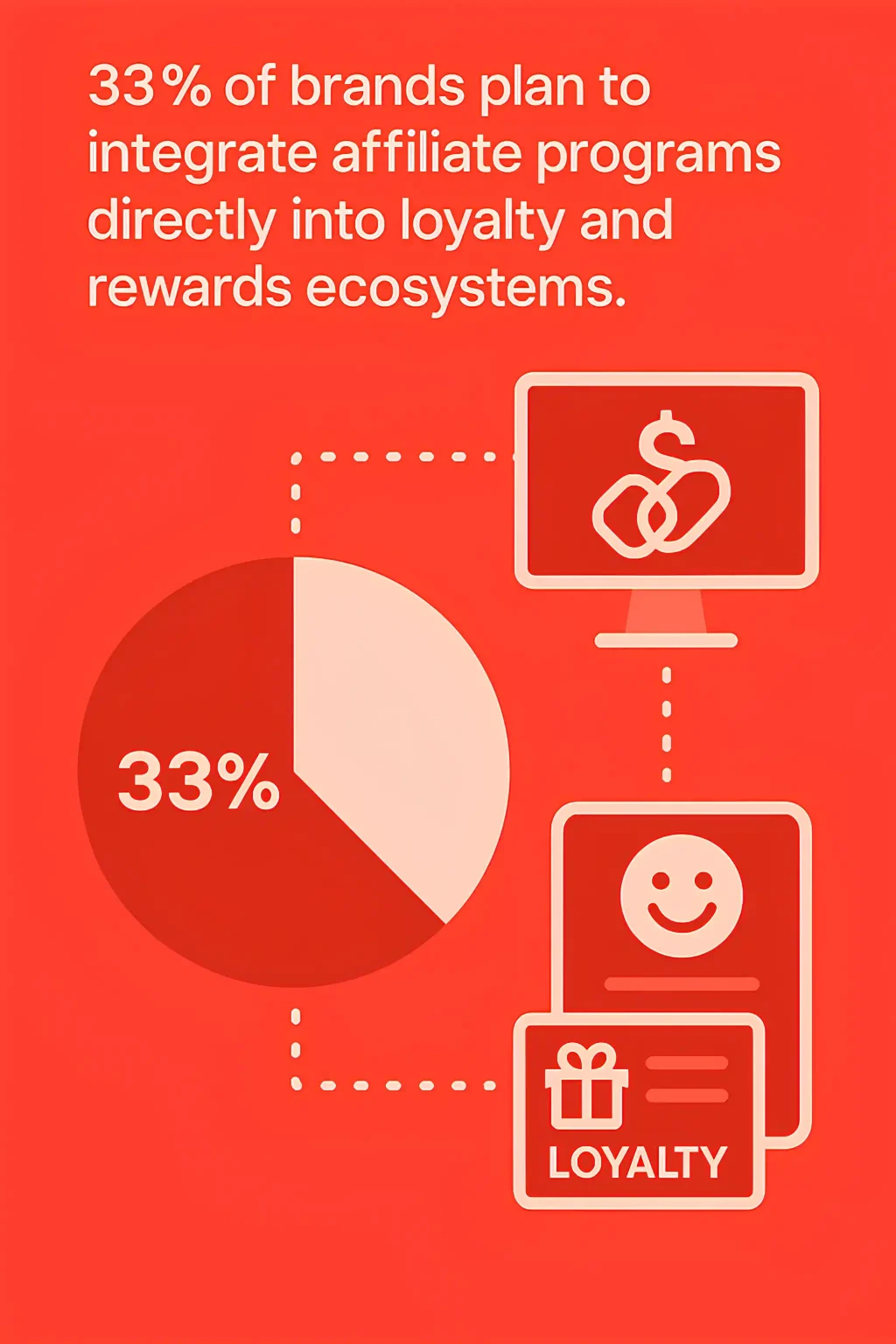
The insights in this report provide the foundation to refine strategies, strengthen partnerships, and unlock new opportunities in a market that continues to reward those who move with the data.

